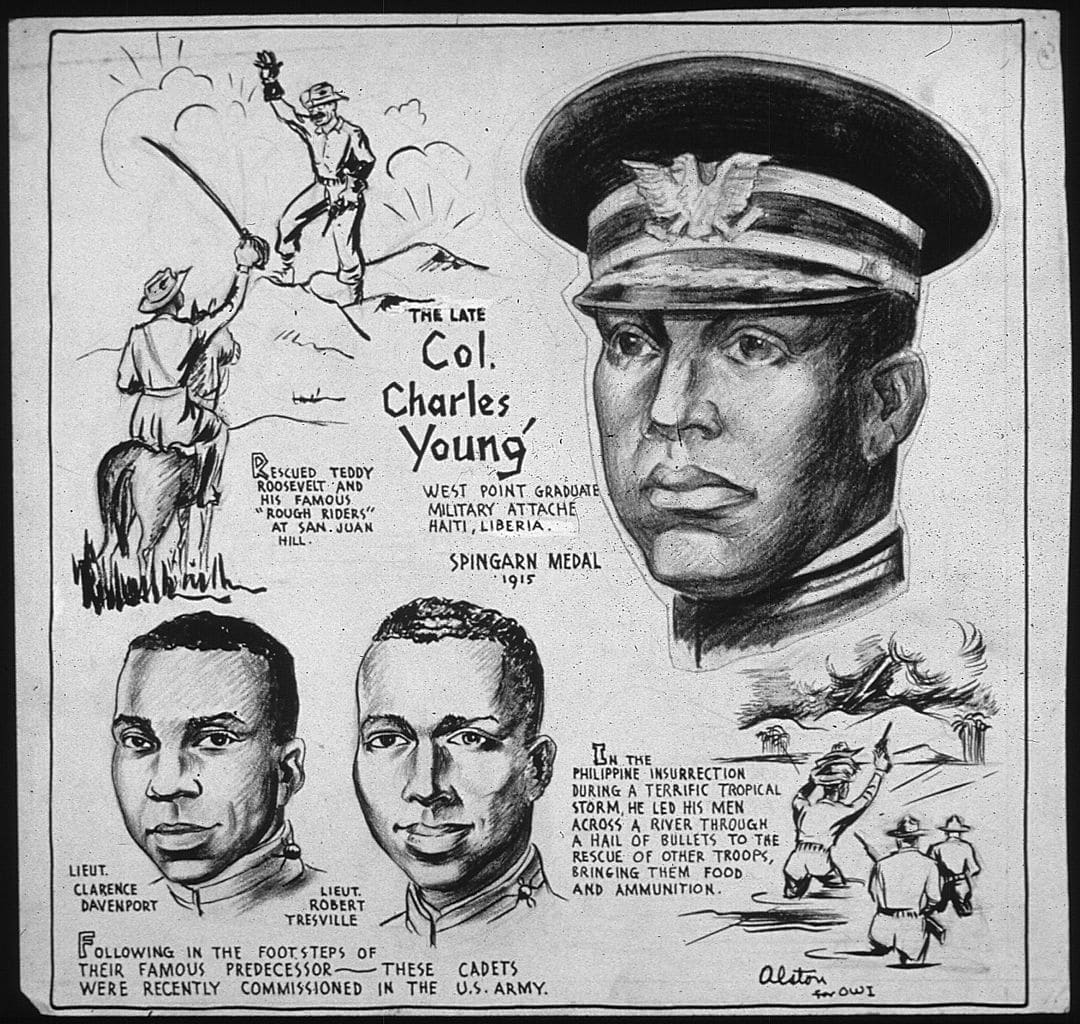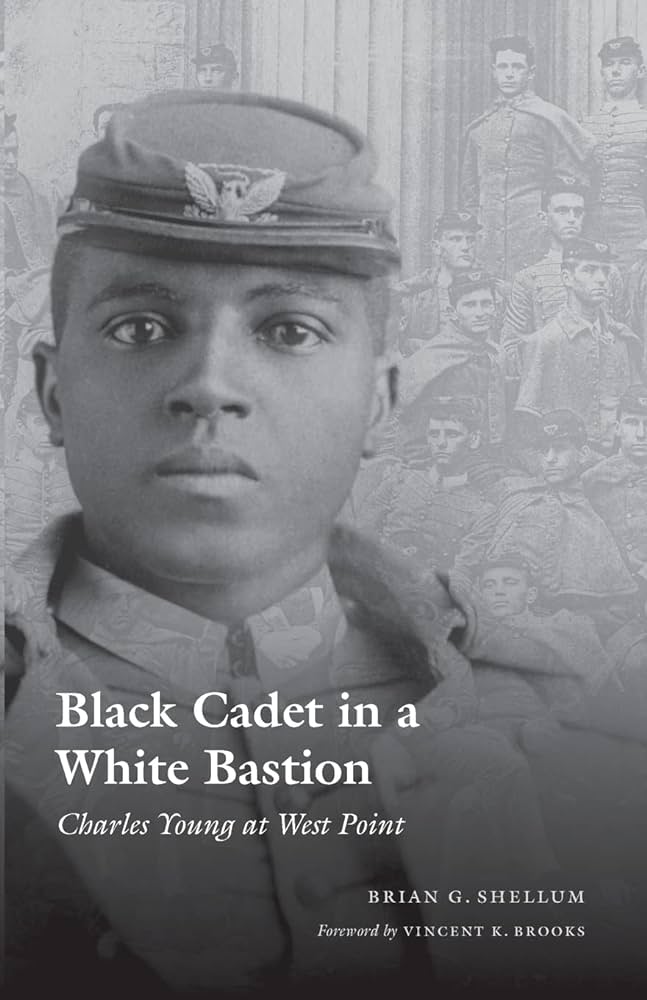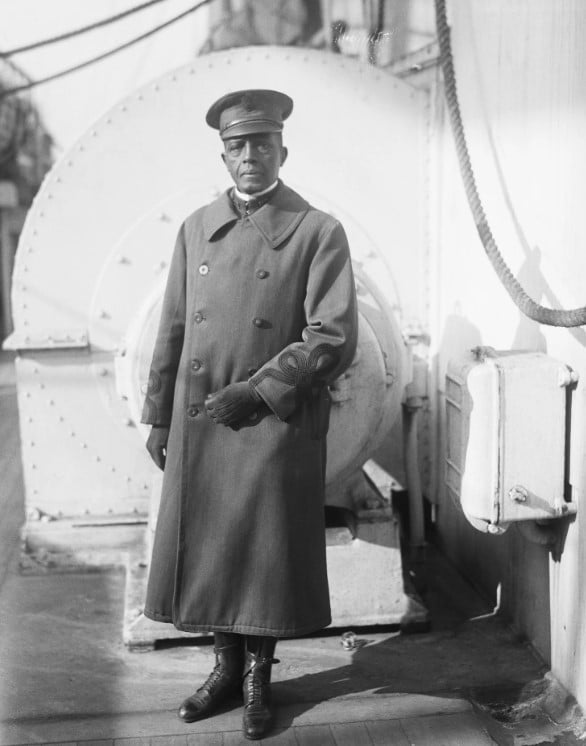Charles Young: Engraving His Name In U.S. Army History
Charles Young is one impressive United States Army officer, and left his mark on American military history. He was a real trailblazer, breaking barriers and making history. His story’s all about determination and resilience, and it’s one that’s sure to inspire.
Charles Young’s Pursuit Of Learning

Born in 1864 in MaysLick, Kentucky, Charles came into the world during a tumultuous time – right in the midst of slavery. His father, Gabriel Young, took a bold step towards freedom by escaping from slavery across the Ohio River to Ripley, Ohio, in 1865. Gabriel didn’t stop there – he enlisted in the 5th United States Colored Heavy Artillery Regiment towards the end of the Civil War. His courageous service not only earned him his own freedom but also that of his wife, Arminta Bruen, thanks to the 13th Amendment.
Arminta, Charles’s mother, was a literate woman, suggesting she may have worked as a house slave. After Gabriel’s discharge from the Army in 1866, the Young family settled in Ripley, Ohio. Gabriel’s continued service in the Army post-war even earned him a bonus, giving him the means to purchase land and build a home for his family. It’s a testament to the resilience and determination of the Young family, overcoming the challenges of slavery to build a better life for themselves.

The Youngs lived on Cherry Street in Ripley, where Charles attended the colored school and got some homeschooling from his mom. Music was in his blood from an early age, and he showed real talent on the piano and violin, even playing at the AME Church as a teenager.
Back in the 1870s, Ripley’s schools were kind of mixed up, which gave Charles a chance to shine. He didn’t just stick to the basics either – during high school, he dove into subjects like German and French, and he graduated with top honors in 1881. Especially considering he was the only African American in a class of twenty-one graduates.
Charles spent some time teaching at the colored school in Ripley. Back then, schools still separated colored and white students. At one meeting, he even presented a paper called “We Must Educate,” showing his dedication to the cause of education for all.
His Effort To Overcome Extreme Racial Discrimination
A few years later, his father encouraged Charles to take the entrance exam for West Point. Turns out, he nailed it – coming in second highest in his district. That got him a spot after the top candidate passed on enrollment.

In 1884, Charles headed to West Point, thanks to a nomination from Representative Alphonso Hart of Ohio’s 12th District. Being one of the first African-Americans to attend and graduate from West Point wasn’t easy. He faced a ton of racial discrimination from classmates, faculty, and upperclassmen. Hazing was pretty common at military academies, but Charles got hit with a lot more abuse than most, all because of the color of his skin.
Once, in the mess hall, a white cadet refused to take food from the same platter as Young. Young was targeted by upperclassmen and hit with a whopping 140 demerits, which was way more than usual. Plus, while everyone else was just called by their last names, Young was singled out with a “Mr. Young,” like they were trying to show him some fake respect or something.
Young, trying to find some connection in all the chaos, would chat with the West Point servants in German. It was his way of keeping some sense of normalcy. Towards the end of his five years there, things got a little better. Some of his classmates started to see past the color of his skin and recognize him for who he really was.
But don’t get it twisted – Young’s time at West Point was no walk in the park. It was tough as nails. Yet, despite all the discrimination and taunts, he pushed through and graduated in 1887. That’s what we call perseverance.
His Early Military Career

Young began his service with the Ninth Cavalry, from 1889 to 1890 he served at Fort Robinson, Nebraska, and from 1890 to 1894 at Fort Duchesne, Utah. In 1894, he was assigned to Wilberforce College in Ohio, an historically black college (HBCU), to lead the new military sciences department. A professor for four years, he was one of several outstanding men on staff.
Charles Young made history in the U.S. Army. He kicked off his service with the Ninth Cavalry, putting in some time at Fort Robinson, Nebraska, and later at Fort Duchesne, Utah. Then, in 1894, he headed over to Wilberforce College in Ohio, a historically black college, to take charge of the new military sciences department. He spent four years as a professor there, alongside some other impressive men.
When the Spanish–American War broke out, Young got bumped up to the temporary rank of major of volunteers in May 1898. Leading the 9th Ohio Infantry Regiment, which was considered a “colored” unit, he was at the helm of a pretty significant force, despite its smaller size
It’s worth noting that this was likely the first time an African-American commanded a sizable unit in the United States Army – a real milestone in history. After his stint with the volunteers ended in January 1899, he went back to his regular army rank of first lieutenant. Later, in February 1901, he got promoted to captain in the 9th Cavalry Regiment.
Charles Young – History Maker In The U.S. Army
Charles Young took on the role of captain for a black company stationed at the Presidio of San Francisco. Later on, he landed the gig as superintendent of Sequoia and General Grant national parks. His impact on the parks was huge as he focused a lot on road construction, making it easier for people to visit and enjoy the beauty of these places.

On November 2, 1903, Young got reassigned as a troop commander of the Tenth Cavalry at the Presidio. But his journey didn’t stop there.
In 1904, when the Army set up the Military Intelligence Department, they picked Young to be one of the first military attachés.His mission was to gather intel on various groups in Port-au-Prince, Haiti. He spent three years there and worked to identify any potential threats to the government.
In 1908, Young was sent over to the Philippines to join his Ninth Regiment and take charge of a squadron. In 1912, Young made history as the first African-American military attaché to Liberia and became the first African-American to reach that rank in the regular U.S. armed services. He even wrote a book called “The Military Morale of Nations and Races” where he challenged the prevailing ideas about race and military power.
During the 1916 Punitive Expedition by the United States into Mexico, Young, leading the 2nd Squadron of the 10th United States Cavalry, showed some serious bravery by leading a cavalry charge against Pancho Villa’s forces without losing a single man.
In July of 1916, Young made history again by becoming the first African American to be promoted to lieutenant colonel. He even took command of Fort Huachuca in Arizona, home base of the “Buffalo Soldiers,” until mid-1917.
Charles Young: A Trailblazing Military Career Cut Short And The Death

Before the United States entered World War I, Young was removed from active duty, supposedly due to his high blood pressure.
In fact, A southern, white lieutenant, Albert Dockery who didn’t want to serve under a Black man like Young and he complained to the War Department. Secretary of War Newton Baker replied that he should “either do his duty or resign.” But get this – the President stepped in and overruled Baker’s decision.
In May 1917, Young reached out to Theodore Roosevelt for help getting back on active duty, but President Wilson shut him down. So, Young went back to teaching at Wilberforce University for most of 1918. Then, in 1919, he got assigned as a military attaché to Liberia.
But here’s where things take a sad turn. While Young was doing a recon mission in Nigeria in late 1921, he suddenly fell seriously ill. Turns out, it was a kidney infection, and despite being rushed to a British hospital in Lagos, Young didn’t make it. He passed away on January 8, 1922.

